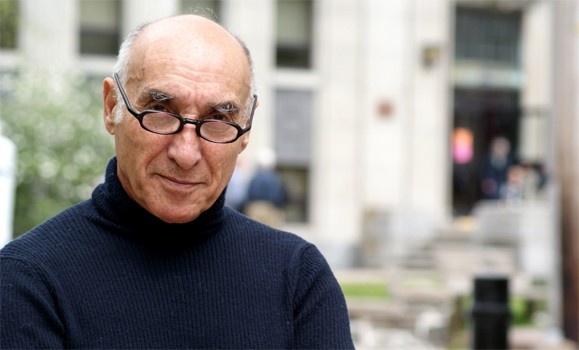The –¬º”∆¬¡˘∫œ≤ ø™Ω±÷±≤•-Botswana Architectural Education Project is ending after 20 years, though one of its biggest proponents insists that this is only the beginning.
Between 1980 and 1994, Essy Baniassad served as the dean of what is now Dal’s School of Architecture. One day, he received a letter through a non-profit development agency called the World University Service of Canada alerting him to the Government of Botswana’s difficulties in finding placements for its students abroad.
“Their efforts in Canada were not producing any results and they wanted to know why this process was so difficult for them,” says Dr. Baniassad.
“I wrote back to say that even though the process here is called admission, we see it as invitation, and invitation carries with it the idea that you feel prepared to host this student, to help them do what they came here to do. My colleagues and I felt that we didn’t have what it would take to teach students from Botswana.”
Dr. Baniassad cited the culturally-specific nature of architecture for his initial rejection of the Botswana government’s proposal. “If somebody were applying to study mathematics, they wouldn’t receive the same response. Architecture relates to very specific histories and traditions, and therefore we felt we didn’t have the necessary capacity to deal with Botswana students.”
The Government of Botswana responded to Dr. Baniassad’s comments by asking what could be done to bridge the cultural gap. “I wrote a response that amounted to about five pages, about what it would take for not just this school but any school to equip themselves to do this.”
Building a foundation
Shortly afterward, Dr. Baniassad received another letter in the mail, this time a proposal for the school to receive Botswana students. “We looked through all their work,” says Dr. Baniassad, noting that a substantial portion of the students’ prior education “would have to be undone and redone, a process that would take about six years.”
An agreement was reached and the Faculty of Architecture welcomed an initial crop of seven students. Over the years, that number rose to 36. Out of those, 32 now have Master of Architecture degrees, and two have Bachelor of Environmental Design Studies degrees. (The remaining two students, sadly, passed away in separate, unrelated accidents.)
Funding for the program was provided by the Government of Botswana through tuition fees and stipends, and the program was designed to emphasize “education not alienation,” immersing Botswanians in Canadian culture while ensuring they maintained strong connections to their home country.
“Our graduates are back in Botswana, teaching and practicing and making quite significant contributions. We laid this out very carefully. It wasn’t an ad hoc thing. We wanted to be able to maintain a steady course while being flexible in regard to changing conditions over two decades.”
Long-term impacts
The program's objective was also to help establish a base for education in Botswana. "We designed the courses so that our students would be studying more than just architecture, says Dr. Baniassad. "They would be studying how to go back home and use the knowledge they had gained to teach others.”
To that end, the University of Botswana established an architecture program in 2003, with developmental contributions from Dr. Baniassad, who served as an advisor and director. The program’s existence has effectively negated a need to send Botswana architecture students abroad, since those educational demands can now be met locally.
Dr. Baniassad counts the –¬º”∆¬¡˘∫œ≤ ø™Ω±÷±≤•-Botswana Architectural Education Project as one of a number of successful international development initiatives the School of Architecture has embarked upon over the years, including the building of earthquake- and fire-resistant living units in Peru and establishing housing cooperatives in Columbia, among others.
For his next project, Dr. Baniassad will be studying urbanization in rural communities in Southern Africa.
“Collectively, we have more potential for contribution than we realize,” says Dr. Baniassad. “You rarely question what happens beyond what you’re doing, what happens after you’ve reached a goal. Is there a need for what you’re doing? Are there others that could add to what you’re doing? Together we could all make be making a much bigger difference.”

